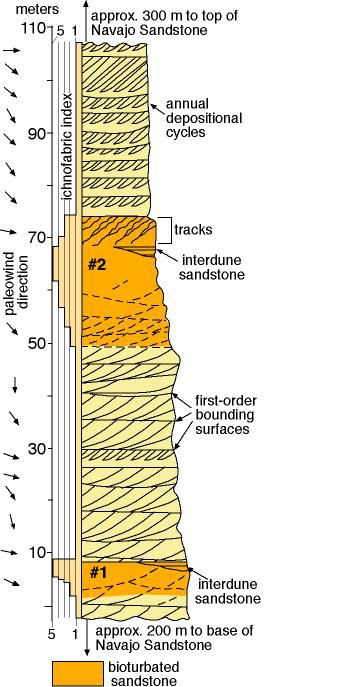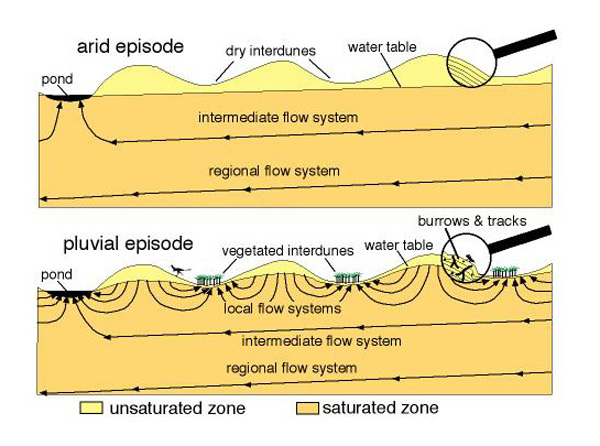Burrows of invertebrate animals are extremely abundant within eolian sandstone
at two stratigraphic intervals of the Early Jurassic Navajo Sandstone on the
northern Paria Plateau near the Arizona-Utah border.
The burrows are within both dune and interdune sandstones. Much
of the rock within the intervals is completely bioturbated (ichno-
fabric index of 5 sensu Droser and Bottjer, 1989).
Some of the burrows are clustered. These might represent the
emergence of young insects from a multi-chambered nest.
Vertebrate tracks are also present within the bioturbated zones. This trackway
(Brasilichnium) was made by a mammal-like reptile ascending an angle-of-
repose slope. Note grainflow strata above and below the tracks.
This view is downdip and shows tracks in cross-section within grainflow strata .


